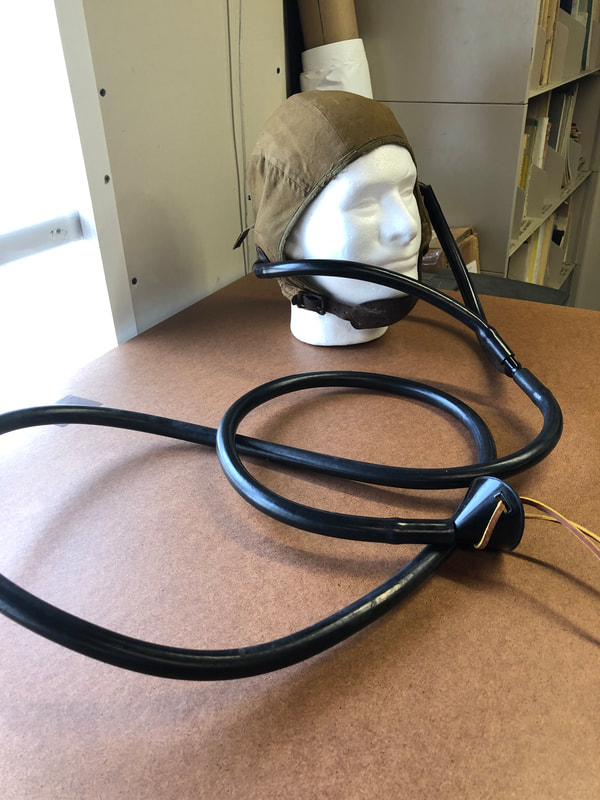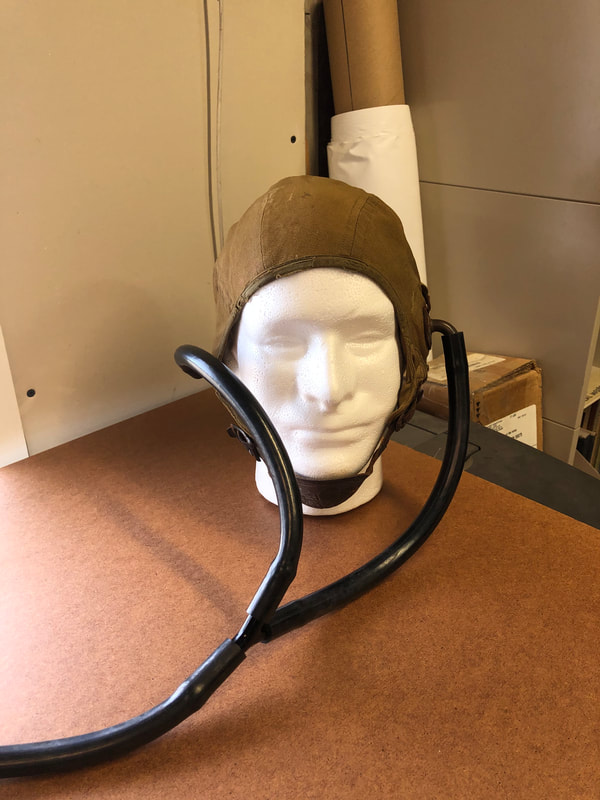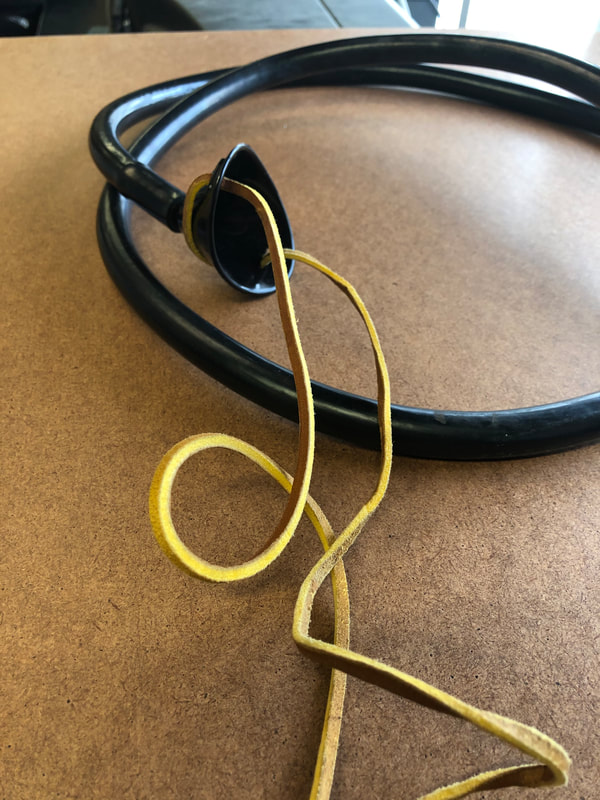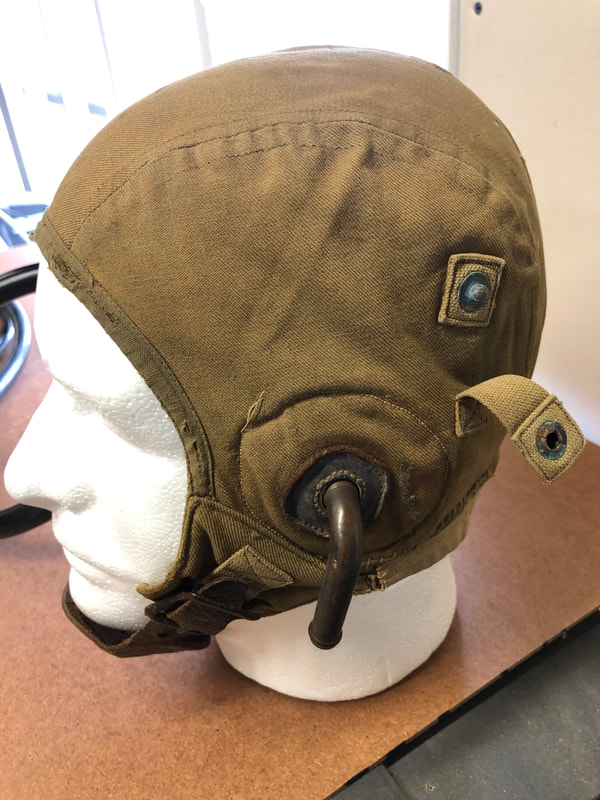|
By Dick Leighninger
Can you imagine taking flying lessons in an open cockpit military trainer with the instructor in the back seat giving you instruction through a rubber tube connected to the earflap of your cloth or leather helmet? Well that’s the way cadets learned how to fly before and during WWII. The apparatus was called the Gosport speaking tube. When WWII started, pilot training for the military included the Primary, Basic and Advanced phases. The Basic (BT-13/SNV) and Advanced aircraft (T-6/SNJ) used by the Army and Navy had electronic intercoms for communication. The Primary trainers (Stearman/N3N/PT-22) did not. Therefore, they had to use the Gosport. Designed in England by flying instructor Robert Smith-Barry at the School of Special Flying he opened in Gosport, England in 1917, the Gosport was a thick rubber tube about 6’ long, with a split in one end that attached to short metal tubes in the cadet’s helmet, and at the other end a rubber mouth piece that the instructor somehow attached in or near his mouth with leather thong attachments. The tube was routed through the dashboard on the instructor’s side, behind the cadet, to the front where the cadet sat. See pictures attached. Unfortunately, there are no longer too many WWII pilots who experienced the Gosport to tell us how it worked. But we do know Gosport like speaking tubes were common on military vessels during the war. The speaking tubes were used to communicate between decks and compartments in the ships. Speaking tubes were installed on ocean going vessels long before World War I, so this may be where Mr. Smith-Barry got his idea for the Gosport. The Minnesota Wing currently has a Gosport and cloth flying helmet in its collection and there are plans to install the speaking tube in the Ryan PT-22 at some time in the future.
1 Comment
|
AuthorWelcome to the CAF MN Wing Blog. You will find information on projects we are working on, upcoming events, and more. Archives
April 2024
Categories
All
|




 RSS Feed
RSS Feed